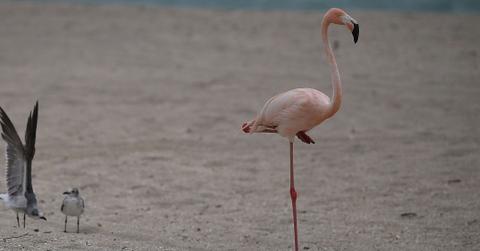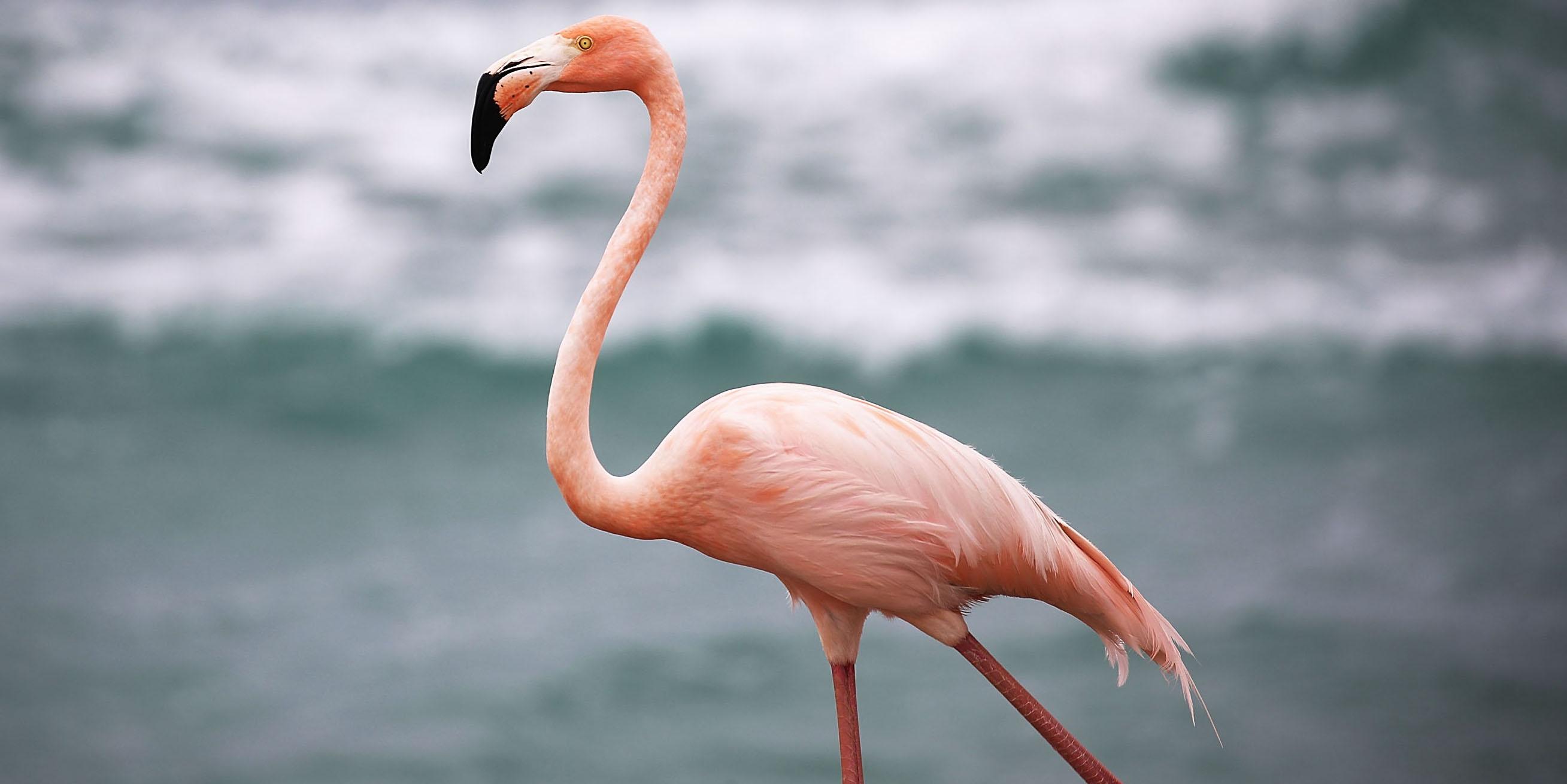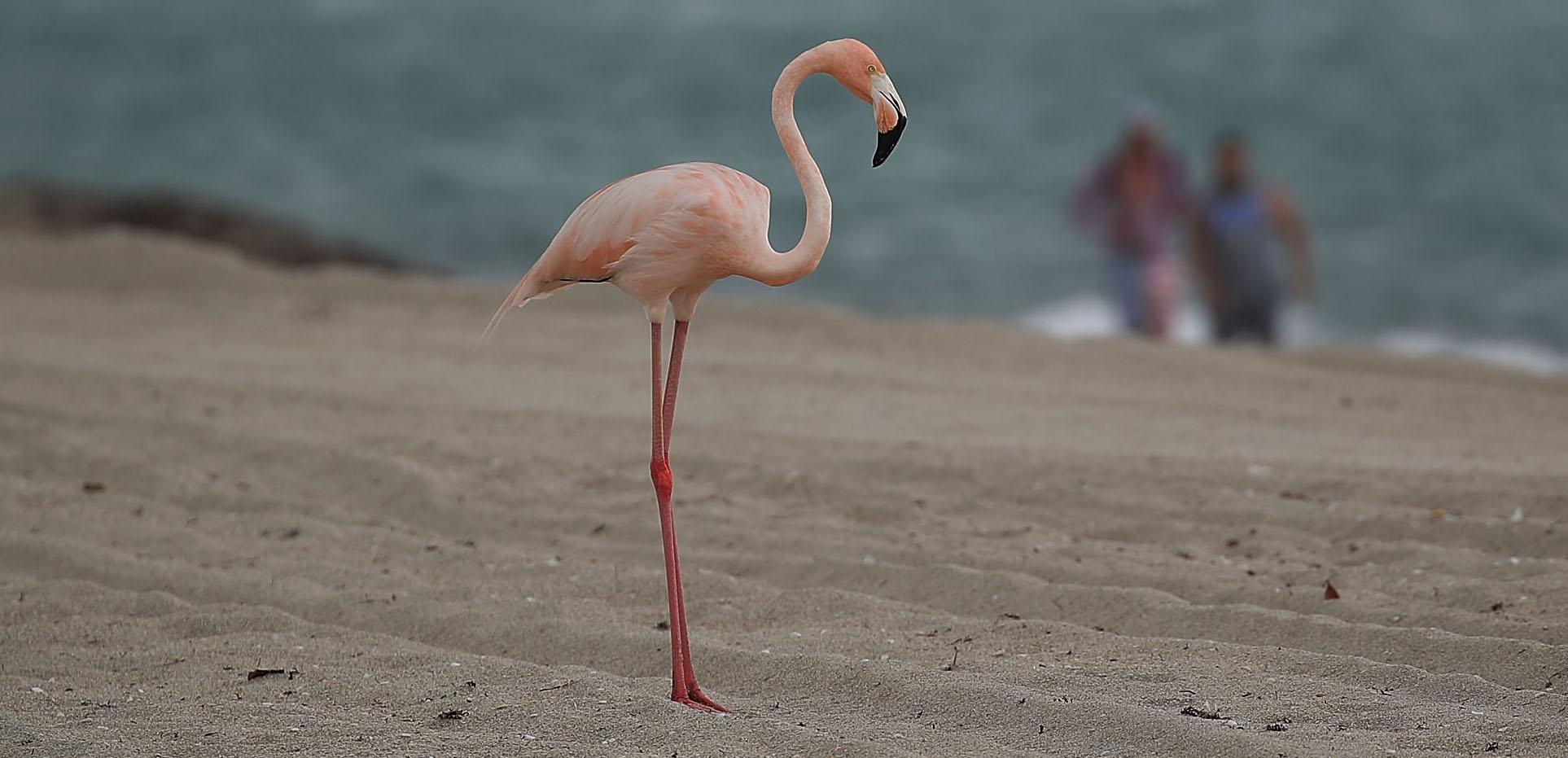Why Do Flamingos Stand on One Leg? The Reason Is Actually Pretty Simple
Published March 8 2022, 6:48 p.m. ET

When it comes to the animal kingdom, every species has its quirks and special talents. But when it comes to birds, there is a range of abilities that seems endless. There are some flightless birds like penguins and strikingly beautiful ones like male peacocks — and some that confuse us like flamingos.
Flamingos are so talented at standing on one leg that they even fall asleep this way. But what's up with the balancing act? Why do they do it and how can that even be comfortable? It turns out that research has shown us how exactly this works in the acrobatic birds, and although the reason is simple, it can seem complicated with a closer look.
Why do flamingos stand on one leg?
According to a 2017 article from researchers Young-Hui Chang and Lena H. Ting in The Royal Society's Biology Letters journal, flamingos stand on one leg simply because it's easier than standing on two. They can support their weight in this way without using their muscles, but standing on two legs makes them engage their muscles in a way that makes them more likely to fall over.

The researchers found that Instead of using their muscles, flamingos use a "point of force" that's directly under their distal joint. This basically allows their joints to stay in a fixed position that even reduces the amount of sway their body has. These birds are designed to stand this way for long periods of time. Other animals just don't have this type of anatomy and could never do this with the same level of ease.
Why are flamingos pink?
Another thing that perplexes animal lovers about flamingos is their pink hue. They aren't that color from birth. Instead, they're born with a white or gray color. But they always eventually blush and can even turn red. This change has everything to do with their diet. According to The Pittsburgh Zoo, this happens because of the amount of carotenoids in their food.
Per Smithsonian Magazine, carotenoids are a type of natural pigment that can be found in microscopic algae. The magazine reports that flamingos' main food source is brine shrimp, and these shrimp eat the algae and pass on the pigment to the birds.

Because of enzymes in flamingos' liver, the carotenoids get broken down into pink and orange pigment molecules. These then make their way into the birds’ feathers. They eat enough of these shrimp to keep the color consistently, but if for whatever reason their diets changed, flamingos would eventually lose their pink and red colors. Most likely, they would go back to gray or white colors they originally had as babies.
It turns out that shrimp also get their color this way, but they aren't the only ones. The Smithsonian also reports that other animals like salmon, mollusks called Nudibranchs, canaries, ghost ants, and even humans can change color based on the foods they eat.